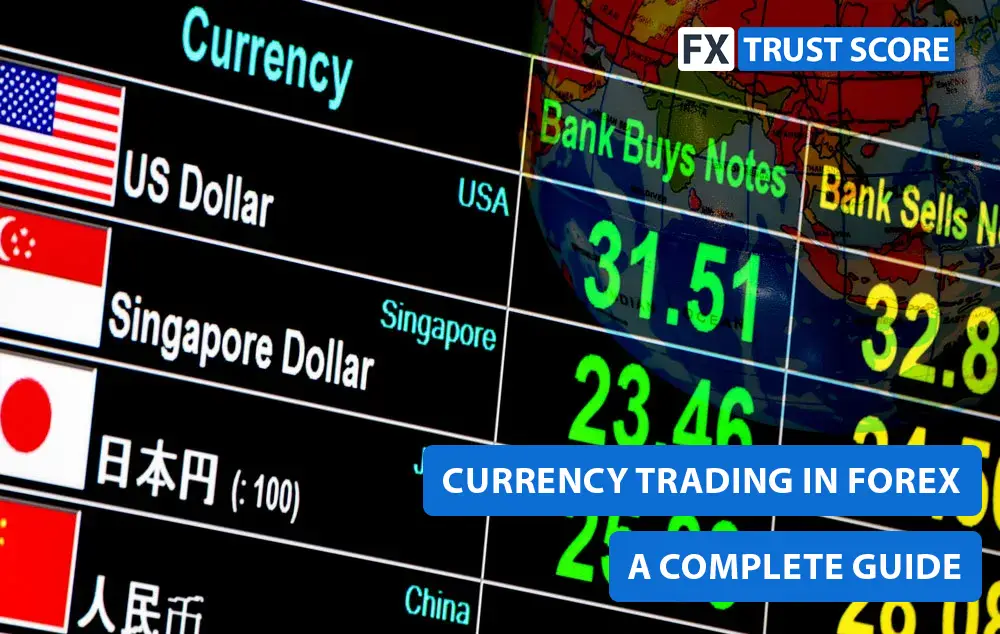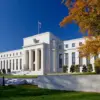Currency trading, also known as forex trading, is the largest financial market in the world. Every day, trillions of pounds’ worth of currencies are traded as participants buy and sell different currency pairs across a global network that operates 24 hours a day, five days a week.

From multinational banks to everyday retail traders, the forex market is open to everyone. It plays a vital role in the global economy by enabling international trade, investment and financial stability.
Whether you’re just beginning or already familiar with forex, understanding the basics of currency trading will help you make more informed trading decisions.
What Is Currency Trading?
Currency trading is the act of exchanging one currency for another. It’s carried out through currency pairs such as EUR/USD, GBP/USD, or USD/JPY. The first currency in the pair is known as the base currency and the second is the quote currency.
When you trade forex, you’re speculating on whether one currency will rise or fall in value compared to another. For instance, if you believe the euro will strengthen against the US dollar, you would buy EUR/USD. If you think the opposite, you would sell it.
Forex trading is unique because it runs continuously throughout the working week. As one global trading session closes, another opens, creating a 24-hour market that follows the sun from Sydney and Tokyo to London and New York.
Why Currency Trading Is Important
Currency trading underpins much of the global financial system. It allows companies to convert profits earned abroad, helps governments manage their foreign reserves, and enables travellers to exchange money when visiting other countries.
For traders, the forex market offers a way to profit from fluctuations in exchange rates. It’s also used by investors to diversify portfolios and hedge exposure to other assets.
Understanding Currency Pairs
Currencies are always traded in pairs because each transaction involves one currency being exchanged for another. There are three main types of pairs:
Major pairs – These are the most traded combinations and always include the US dollar, such as EUR/USD, GBP/USD and USD/JPY.
Minor pairs – Pairs that don’t include the US dollar but involve other major currencies, for example, EUR/GBP or GBP/JPY.
Exotic pairs – These match a major currency with one from a smaller or emerging economy, such as USD/TRY (Turkish lira) or EUR/SEK (Swedish krona).
Each pair moves according to market supply and demand, economic data and geopolitical developments.
What Is a Pip?
A pip is the smallest unit of price movement in a currency pair and represents one standardised increment. In most pairs, a single pip equals 0.0001 of the quoted price.
For example, if EUR/USD moves from 1.0800 to 1.0801, that’s a one-pip movement. Pips are a simple way to measure how far a currency pair has moved, which is crucial when managing trades, setting stop-losses and calculating potential profits.
The Most Traded Currency Pairs
The forex market revolves around a handful of highly liquid pairs that dominate global trading activity:
- EUR/USD – The most traded currency pair, representing the euro and US dollar. It reflects the relationship between the world’s two largest economies.
- USD/JPY – Popular for its liquidity and volatility, this pair links the US dollar and Japanese yen.
- GBP/USD – Known as “Cable”, this pair connects the British pound and US dollar and remains a favourite among traders worldwide.
- USD/CAD – Called the “Loonie”, this pair tracks the US and Canadian dollars and is influenced by oil prices and cross-border trade.
- AUD/USD – Often referred to as the “Aussie”, this pair reflects the performance of the Australian economy and its strong ties to commodity exports.
Direct and Indirect Quotes
Currency prices can be shown in two different ways: direct quotes and indirect quotes.
A direct quote shows how much of your local currency is needed to buy one unit of a foreign currency.
For example, if GBP/USD is 1.30, one British pound equals 1.30 US dollars.
An indirect quote does the reverse, showing how much foreign currency one unit of your home currency can buy.
In this case, USD/GBP at 0.77 means one US dollar is worth 0.77 pounds.
These two types of quotations are simply different perspectives on the same exchange rate.
What Influences Currency Prices?
Currency prices are constantly moving due to a variety of factors. The main influences fall into three broad categories: economic data, geopolitical events and central bank policies.
Economic data
Reports such as GDP growth, employment figures, and inflation rates can all move the markets. Strong data often strengthens a nation’s currency as it suggests a healthy economy, while weak data can lead to depreciation.
Geopolitical developments
Elections, trade disputes, and conflicts can affect confidence in a country’s currency. Periods of uncertainty tend to increase volatility and can push investors toward safer assets.
Central bank decisions
Interest rate changes by major central banks like the Bank of England, the Federal Reserve, or the European Central Bank have a major impact on currency values. Higher interest rates often attract foreign investment, boosting demand for that currency.
Using Currency Charts
Currency charts are essential tools for traders. They show how exchange rates have moved over time, allowing you to identify trends, patterns, and key support or resistance levels.
The three most common chart types are line, bar, and candlestick charts. Traders often add technical indicators such as moving averages or RSI (Relative Strength Index) to help with timing entry and exit points.
Understanding how to read and interpret currency charts can make a big difference when developing a trading strategy.
Where to Trade Currencies
Most currency trading takes place through online brokers that connect traders to the global forex market. Major financial centres like London, New York, Tokyo and Sydney act as hubs for forex activity.
When choosing a broker, look for one that is properly regulated, offers transparent pricing, and provides access to a wide range of currency pairs. A reliable trading platform with analytical tools, charts and fast order execution is essential for success in this fast-moving market.
Final Thoughts
Currency trading is a cornerstone of global finance and a fascinating market for traders of all levels. By learning how forex works, understanding what moves currencies, and applying sound risk management, you can approach the markets with confidence.
Whether you’re trading part-time or looking to build a long-term strategy, gaining a clear understanding of currency trading in forex is the first step towards making more informed and disciplined decisions in the world’s largest financial market.
Publication date:
01/11/2024
Author: FX Trust Score
Last updated on October 17, 2025



